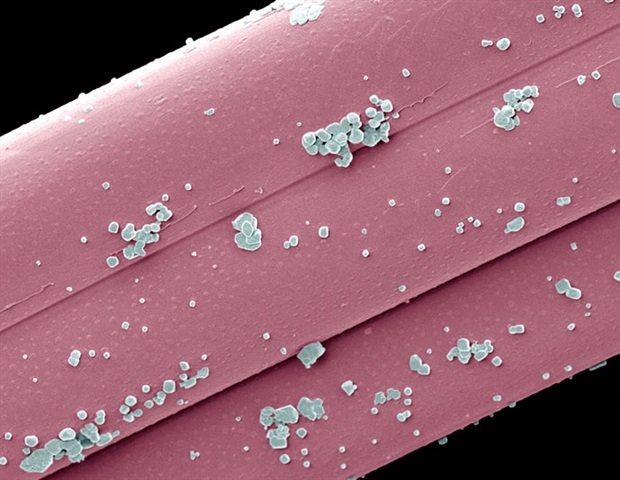A research team in South Korea has successfully developed a new technology that combines nanoparticles with stem cells to significantly improve 3D bone tissue regeneration. This advance marks an important step forward in the treatment of bone fractures and injuries, as well as in next-generation regenerative medicine.
Dr. Ki Young Kim and her team at the Korea Research Institute of Chemical Technology (KRICT), in collaboration with Professor Laura Ha at Sunmoon University, constructed a nanoparticle-stem cell hybrid, called a nanobiohybrid, by incorporating mesoporous silica (mSiOs₂) nanoparticles with human stem cells (hADMSCs). The resulting hybrid cells exhibited markedly enhanced osteogenic (bone-forming) capacity.
3D stem cell aggregates such as spheroids and organoids have long been used to mimic organ and tissue structures. However, they have suffered from nuclear cell death and uneven differentiation due to poor oxygen and nutrient diffusion, limiting their practical use in bone regeneration and drug evaluation.
To overcome these challenges, the research team attached uniform nanoparticles to the surfaces of the stem cells, allowing the cells to intertwine and form stable spherical clusters. Nanoparticles act as both structural scaffolds and osteogenic stimulators, slowly releasing bone-promoting biomolecules that drive stem cells to uniformly differentiate into bone tissue.
Experimental results revealed that nanobiohybrid spheroids exhibited higher cell viability and uniform osteogenic differentiation compared to conventional spheroids. In a mouse knee (skull) defect model, implanted nanobiohybrid spheroids regenerated 36% of the defected bone area within six weeks, achieving approximately 1.3 times more bone regeneration than spheroids composed of stem cells alone.
Although the study is currently in the animal preclinical stage, the researchers expect that this platform could be further developed into patient-specific bone grafts after validation in large animal models and clinical studies.
This approach can be extended beyond bone to regenerate various tissues such as cartilage and skin.”
Dr Ki Young Kim, KRICT
The President of KRICT, Dr. Young-Kuk Lee, added: “We hope our stem cell-based regenerative technology will help improve treatments for patients with bone fractures in an aging society.”
This research was published in the journal ACS Biomaterials Science & Engineering (Impact Factor: 5.5) in August 2025, with Dr. Ki Young Kim as the corresponding author and Professor Laura Ha as the first author.
Source:
Journal Reference:
